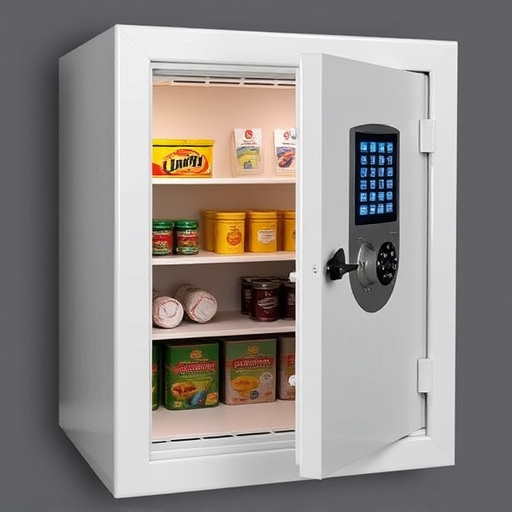Selecting a Diversion Safe Disguised as Food requires blending everyday items that are acceptable and secure. Engineers use camouflage to integrate safes into common foods like jam jars or canned goods, making them virtually invisible. Discreet entry mechanisms like combination locks or magnetic closures protect hidden valuables, accessible only to the aware.
Discover the art of secrecy with a hidden compartment disguised as everyday food items. In this guide, we explore how to seamlessly integrate security into your daily life using clever diversions like candy, tea bags, or even condiments. Learn about innovative design techniques and intricate mechanisms for accessing your safe, ensuring privacy and peace of mind. Uncover the secrets behind creating a Diversion Safe Disguised as Food—your ultimate solution for discreet storage.
- Choosing the Perfect Disguise: Food Items for Safe Keeping
- Engineering a Secret Compartment: Design and Hiding Techniques
- Unlocking Access: Mechanisms for Discreet Entry
Choosing the Perfect Disguise: Food Items for Safe Keeping
When selecting a diversion safe disguised as food, it’s crucial to pick an item that won’t raise any eyebrows and can hold up to close inspection. The key is to opt for everyday items that have a high probability of being overlooked or taken for granted. For example, a jar of jam, canned goods, or even a block of cheese can serve as excellent hiding spots. These food items are commonly found in most kitchens and are naturally acceptable to touch and open, making them the perfect disguise.
Furthermore, their shape and size make them versatile options. A small jar can conceal smaller valuables, while larger tins or blocks of cheese can accommodate more substantial items. The right choice ensures your hidden compartment remains secure and discreet, providing a safe haven for precious possessions without drawing suspicion from curious eyes.
Engineering a Secret Compartment: Design and Hiding Techniques
Creating a secret compartment within an everyday item, like a food container, requires meticulous planning and innovative design thinking. Engineers often turn to clever camouflage techniques to hide the compartment seamlessly. One popular method involves integrating the safe directly into a product that aligns with its surroundings, such as a can of food or a jar of jam. This approach ensures the safe blends in, making it nearly invisible to the untrained eye.
The design process involves selecting materials and shapes that mimic the item’s natural components. For instance, shaping the compartment to resemble the interior curves of a can or using similar textures and colors as the surrounding product. Additionally, employing clever dividers and false bottoms within the container creates extra spaces for hiding valuables while maintaining its functional appearance as a mundane household item, like a Diversion Safe Disguised as Food.
Unlocking Access: Mechanisms for Discreet Entry
Unlocking access to a secret compartment hidden within an everyday item, like a Diversion Safe disguised as food, requires careful consideration of discreet entry mechanisms. These clever devices often employ innovative opening methods designed to keep prying eyes at bay. For instance, some models use intricate combination locks that mimic the appearance of a typical kitchen spice jar or canning lid. Others may feature magnetic closures or hidden hinges, allowing for silent and seamless access when needed.
The beauty of these mechanisms lies in their subtlety; they seamlessly integrate into the item’s design, making them nearly invisible to casual observation. This attention to detail ensures that only authorized users with knowledge of the specific entry point can gain access to the hidden compartment, safeguarding its contents from prying eyes and potential theft.
A secret compartment disguised as a common food item offers a unique solution for secure storage, leveraging everyday objects to create a diversion safe. By carefully selecting items like hollowed-out fruits or canned goods, and employing creative engineering techniques, you can conceal valuable possessions while maintaining an unassuming exterior. Additionally, implementing subtle access mechanisms ensures discretion and ease of use. In today’s world, where privacy is paramount, this innovative approach provides a clever way to safeguard your belongings in the most unexpected places.
